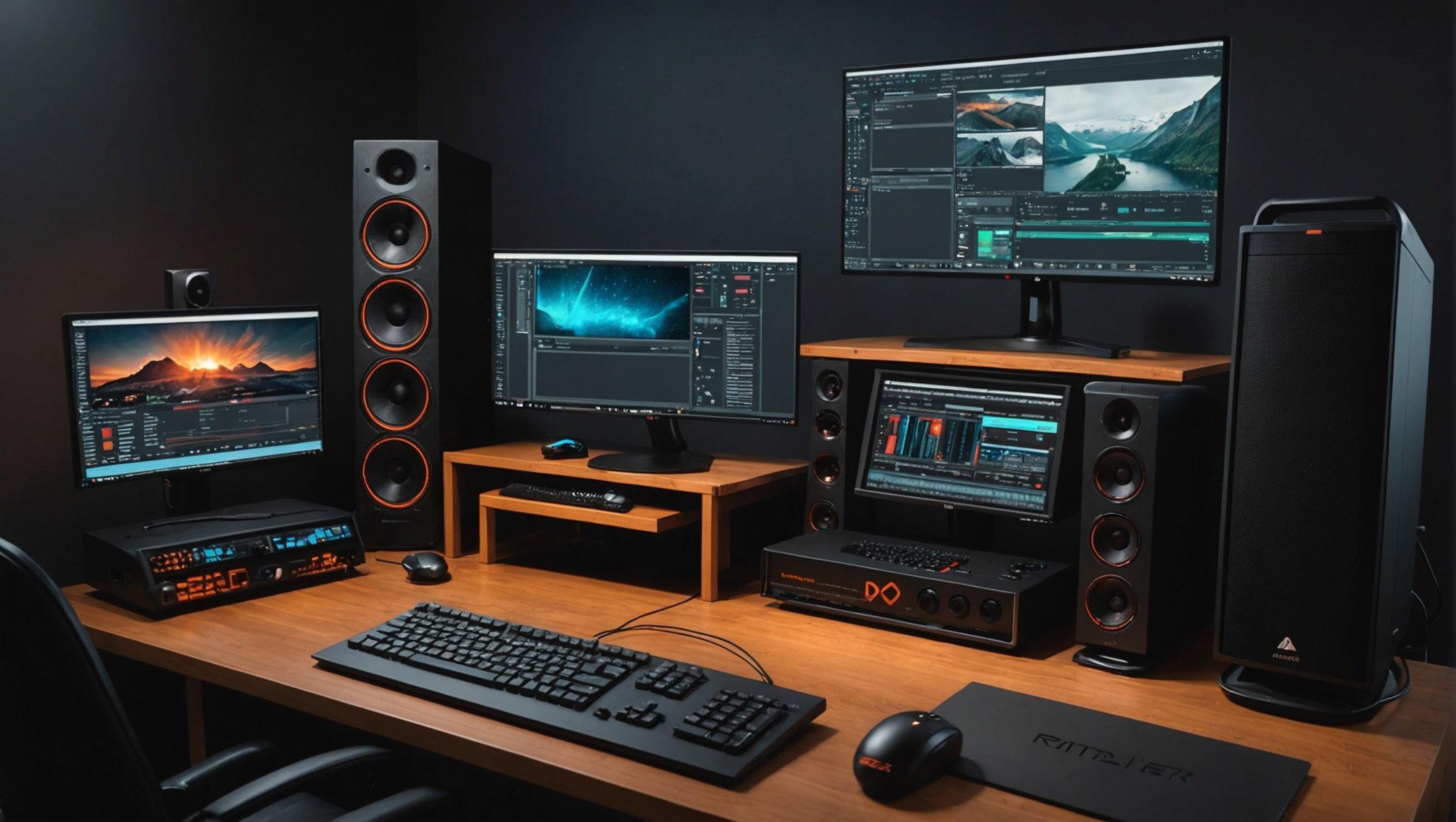In the realm of video editing, having a high-performance workstation is not just a luxury, but a necessity. From managing large file sizes to running powerful editing software, video editing demands a substantial amount of resources from your computer. Picking the right components to build a high-performance workstation can be a daunting task. The right combination of hardware can substantially improve your ability to work more smoothly and efficiently. In this guide, we will walk you through the crucial steps to set up your own powerhouse workstation for video editing using an AMD Threadripper and DaVinci Resolve. Remember, preparation is key to a successful workstation setup.
Choosing the Right AMD Threadripper
Discussions about setting up a high-performance workstation invariably start with the processor. AMD Threadripper is one of the top choices for video editing due to its high core count and superior multi-threaded performance. The right Threadripper can make your video editing experience a breeze, so it’s important to choose wisely.
Also read : How to configure a secure guest Wi-Fi network using a Google Nest Wifi system?
Essentially, AMD Threadripper processors come in various versions, each with its own set of core counts and clock speeds. The question you need to ask yourself is, “What is my demand for video editing?” If you’re working on 4K or 8K video projects, then you should consider the Threadripper 3990X or 3970X, both of which boast impressive core counts and clock speeds. However, if your workflows involve 1080p to 4K video editing, then the Threadripper 3960X or the 2950X should suffice.
While selecting the right processor is important, it’s equally essential to ensure that your motherboard, RAM, and power supply can support your chosen Threadripper. Hence, you must ensure that you have a compatible motherboard, sufficient RAM, and a reliable power supply.
Selecting the Right Components
Once you have your AMD Threadripper ready, your next step is to select the right components that will complement your processor and meet the demands of video editing. These components include RAM, storage, graphics card, power supply, and a cooling system.
When it comes to RAM, you should aim for a minimum of 32GB. However, for optimal performance, especially for 4K or 8K editing, 64GB or even 128GB would be advisable. For storage, a solid-state drive (SSD) is a must. A 1TB SSD should be your starting point, with additional HDDs for archiving your work.
For your graphics card, a GPU that supports OpenGL and OpenCL is necessary, as DaVinci Resolve relies heavily on these for processing. The AMD Radeon Pro series or the NVIDIA GeForce RTX series is an excellent choice in this regard.
Your power supply should be powerful enough to support all these components. A PSU with at least 1000W is generally recommended. Lastly, to ensure that your high-performance workstation doesn’t overheat, invest in an efficient cooling system. A combination of air cooling and liquid cooling is often the best approach.
Installing DaVinci Resolve
The next step in setting up your high-performance workstation for video editing is installing the DaVinci Resolve software. This software has been a favorite among professionals due to its strong color correction and audio post-production capabilities.
Start by downloading the latest version of DaVinci Resolve from the official website. After the download completes, initiate the installation process by following the on-screen prompts. Remember to check the system requirements to ensure compatibility with your AMD Threadripper and other hardware components.
Optimizing DaVinci Resolve
After the installation, it’s crucial to optimize DaVinci Resolve to reap the maximum benefits from your high-performance workstation. Start by optimizing the software’s preferences. Go to the ‘System’ tab in the preferences and adjust the GPU processing mode to ‘OpenCL’ if you’re using an AMD GPU or ‘CUDA’ if you’re utilizing an NVIDIA GPU.
Next, adjust the ‘Video and Audio I/O’ section to match your specific monitor and speaker setup. Lastly, ensure to enable ‘Stop renders when a frame or clip cannot be processed’ in the ‘General Options’ sub-tab under the ‘User’ tab.
Keeping Your Workstation Up-to-Date
Lastly, the performance of your workstation can be significantly affected by how well you maintain it. Regularly updating your operating system, graphics card drivers, and DaVinci Resolve software is a must. Additionally, routinely checking your hardware for any signs of failure can help prevent any potential issues that could disrupt your workflow.
Remember, setting up your workstation is just the first step. Ensuring its longevity and performance requires consistent care and attention. With the right components, software optimization, and regular updates, your experience in video editing will be smooth and efficient.
The Importance of a Reliable Monitor and Audio Set-Up
Visual and audio quality lie at the heart of any video editing project, and these elements can only be accurately assessed with a reliable monitor and audio set-up. The monitor you choose should ideally have a high resolution, a good contrast ratio, and accurate color reproduction. Given that the AMD Threadripper supports multiple monitors, you can choose to have a dual or triple monitor setup according to your workspace and the type of video editing you’ll be doing.
For instance, the Dell Ultrasharp series or the ASUS ProArt series are excellent choices for professional video editors as they are designed with color accuracy in mind. If you’re editing in 4K or 8K, look for monitors that support this resolution. The size of the monitor also matters, with a 27-inch or greater monitor offering the most comfortable viewing experience.
In terms of audio, a reliable set of studio-grade headphones or speakers is a must. High-quality audio equipment can help you notice subtle differences in audio quality, make precise adjustments, and ultimately create a more immersive experience for your viewers. Brands like Audio-Technica, Sennheiser, and Behringer have a range of professional-grade headphones and speakers that are popular among video editors.
Finally, make sure that both your monitor(s) and audio equipment are correctly calibrated. This will ensure that you’re making accurate adjustments during the editing process.
Setting up a high-performance workstation for video editing using an AMD Threadripper and DaVinci Resolve marks a significant step forward in your video editing journey. The kind of performance and efficiency this setup can deliver will transform the way you work, making even the most demanding jobs manageable and enjoyable.
Remember, though, that having a powerful workstation is just one part of the equation. Continuous learning, skill enhancement, and staying updated with the latest trends in video editing are equally important.
Your workstation is effectively your partner in the creative process, enabling you to bring your ideas to life. The more you invest in it, the more it will give back in terms of productivity, quality, and creative satisfaction.
In conclusion, a high-performance workstation, equipped with an AMD Threadripper and optimized for DaVinci Resolve, will make a world of difference to your video editing capabilities. With the right hardware and software, consistent updates, and a commitment to learning, you’ll be well on your way to becoming a proficient and successful video editor.











